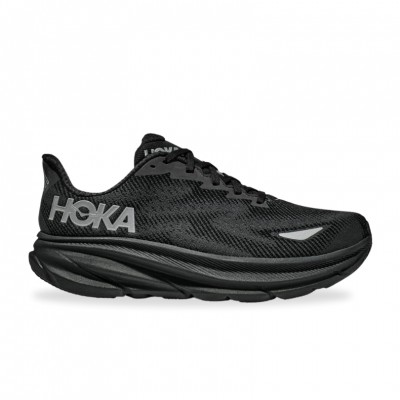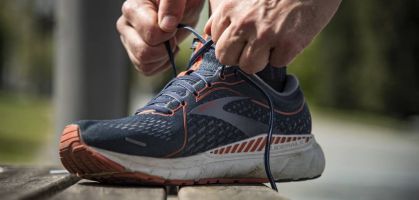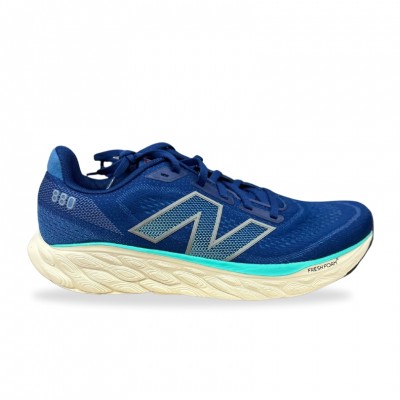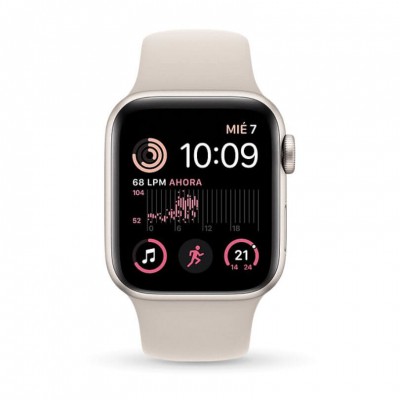The quest for longevity is a constant in human history. But we want to live longer and in better conditions. And while it is true that genetics plays an important role in how long we live, science has shown that our daily choices can significantly influence the quality and length of our lives. In this context, physical exercise is without any doubt, a key tool, not only to extend life, but to improve the quality of those extra years. But not all exercises are equally effective when it comes to longevity. At RUNNEA we are going to rely on scientific evidence to show that the combination of zone 2 training (don't worry, we'll explain what it is) and strength training may be the most effective strategy for maximizing longevity and overall well-being.

What is Zone 2 training?
Zone 2 training, or low-intensity aerobic exercise, is performed at an intensity where the body uses primarily fat as an energy source, operating on its aerobic metabolism. This means that, during this type of exercise, the body burns fatty acids to produce energy, a process that takes place within the mitochondria of the cells. Zone 2 is generally defined as 60 of a person's maximum heart rate, a level of effort that allows a conversation to be held without difficulty. This type of training is accessible to most people, from novice runners to experienced athletes, and can be maintained for long periods without causing extreme fatigue.

What makes Zone 2 training especially effective for longevity is its impact on mitochondrial function and overall body metabolism. At moderate intensities, the body burns fat efficiently, producing a large amount of energy through the oxidation of fatty acids in the mitochondria. This process is essential not only for improving aerobic capacity, but also for maintaining metabolic health and preventing chronic disease.
Not sure which shoe to choose?
In a few simple steps we help you to choose the ideal running shoe for you.
GO TO THE RECOMMENDERThe Science Behind Zone 2 Training and Longevity
Mitochondria, known as the "powerhouses" of cells, are responsible for producing ATP (adenosine triphosphate), the main source of energy for most cellular processes. As we age, mitochondrial efficiency declines, which is associated with reduced physical capacity, increased risk of metabolic disease and accelerated aging. This is where zone 2 training shows its potential: it has been shown to be one of the most effective methods of improving mitochondrial function, increasing both the number and efficiency of these structures.
A study published in The Journal of Physiology showed that low-intensity resistance training, such as that performed in zone 2, can increase mitochondrial biogenesis, i.e. the production of new mitochondria, in older people. This process not only improves aerobic capacity, but also increases metabolic flexibility, allowing the body to efficiently switch between using fats and carbohydrates as energy sources. This flexibility is crucial for the prevention of metabolic diseases such as type 2 diabetes and metabolic syndrome, both of which are associated with premature aging and decreased quality of life.
In addition, zone 2 training has a significant positive impact on cardiovascular health. A study published in The Lancet found that adults who engage in regular aerobic exercise at moderate intensities, such as that performed in zone 2, have a significantly lower risk of developing cardiovascular disease, which is a leading cause of death worldwide.
This study, which looked at more than 90,000 people, found that even moderate levels of aerobic exercise were associated with a 31% reduction in the risk of death from any cause and a 20% reduction in the risk of cardiovascular disease.
The impact of Zone 2 training on metabolic and cardiovascular health is only part of the story. This type of training has also been shown to have significant anti-inflammatory effects. Chronic low-grade inflammation is a known risk factor for many age-related diseases, including heart disease, type 2 diabetes and some cancers. Moderate aerobic exercise, such as Zone 2 training, reduces inflammatory markers in the body, helping to prevent these diseases and promoting healthy aging.
Strength Training: An Essential Component for Longevity
While zone 2 training optimizes cardiovascular health and mitochondrial function, strength training addresses another very important aspect of aging: the loss of muscle mass and bone density. As we age, it is natural for our bodies to lose muscle mass in a process known as sarcopenia. This loss of muscle not only decreases physical strength, but is also associated with increased frailty, an elevated risk of falls and fractures, and a reduced ability to perform everyday activities.
Strength training, which includes activities such as weight lifting, elastic band exercises, and body weight exercises, is the most effective intervention to prevent sarcopenia and maintain muscle mass as we age. In addition, strength training also strengthens bones, which is crucial for preventing osteoporosis and maintaining mobility and independence in old age.

A study published in the American Journal of Epidemiology found that people who performed strength training at least twice a week had a 23% lower risk of death from any cause, and a 31% lower risk of death from cancer, compared to those who did no strength training at all. These results underscore the importance of strength training not only for longevity, but also for chronic disease prevention.
The importance of strength training for longevity is based on its ability to improve body composition, increase bone mineral density and improve metabolic function. As skeletal muscle is the main site of glucose storage in the body, maintaining and increasing muscle mass improves insulin sensitivity, which is crucial for the prevention of type 2 diabetes 2 In addition, strength training also has a positive impact on cognitive function. It has been shown that resistance exercises can increase the release of growth factors such as brain-derived neurotrophic factor (BDNF), which is essential for neuroplasticity and overall brain health.
Why the combination of Zone 2 and strength is so effective
The true power of combining zone 2 and strength training lies in how these two types of exercise complement each other to offer a holistic approach to health and longevity.
- Comprehensive improvement of cardiovascular and muscular health:
Zone 2 training focuses on improving cardiovascular health and metabolic efficiency, which is essential for preventing heart disease and maintaining a healthy metabolism. On the other hand, strength training focuses on preserving and developing muscle mass and bone density, which is crucial for maintaining mobility and functional strength in old age.
- Reduced risk of chronic disease:
Both types of exercise have been shown to reduce the risk of chronic disease, but they do so in different and complementary ways. Zone 2 training reduces the risk of cardiovascular disease, improves metabolic health and reduces chronic inflammation, a key factor in aging. Strength training, meanwhile, combats sarcopenia, improves insulin sensitivity and helps maintain a healthy metabolism, which is crucial for preventing diseases such as type 2 diabetes and cancer 2
- Maintaining functionality throughout life:
One of the keys to a long and healthy life is maintaining the ability to perform daily activities without fatigue and without risk of injury. Zone 2 training improves aerobic endurance, allowing people to perform physical activities for longer without tiring. Strength training, on the other hand, ensures that the body maintains the strength needed to perform physical tasks, from lifting objects to climbing stairs, which is essential for independent living in old age.
- Ideal balance between intensity and recovery:
Zone 2 training is less stressful on the body than high-intensity workouts, allowing people to maintain a regular routine without a high risk of injury or burnout. Strength training, while more demanding, can be adjusted to suit any fitness level, allowing for a gradual progression that minimizes the risk of overload and maximizes long-term benefits.
How to implement the Zone 2 and strength combination into your routine 2
For those interested in maximizing their longevity through exercise, here's a practical guide on how to incorporate both zone 2 training and strength training into your weekly routine.
1. Zone 2 training:
- Frequency: 2 times per week (based on your fitness level).
- Duration: 40-90 minutes per session.
- Intensity: Keep your heart rate at 60 of your maximum. You can use a heart rate monitor to make sure you are in the right zone.
- Recommended activities: Running, cycling, swimming or brisk walking are ideal to keep you in zone 2
2. Strength training:
- Frequency: 3 times per week.
- Duration: 30-45 minutes per session.
- Focus: Perform exercises that work all major muscle groups. Exercises such as squats, deadlifts, bench presses and pull-ups are highly recommended.
- Progression: Gradually increase weight or resistance as you get stronger, making sure to maintain good technique to avoid injury.
3. Rest and recovery:
It is very important that you incorporate rest days and active recovery activities into your routine. Rest will allow for muscle repair and growth, and prevent nervous system exhaustion. Activities such as yoga, gentle stretching and walking will help you maintain mobility and reduce stress without compromising recovery.
Adaptation to different groups

The recommendation of weekly running and strength training is an excellent basis, but it is important to adapt it to different groups of people according to their age, physical condition and goals.
1. Beginners: If you decide to start with this sports routine it is essential to do it with a low frequency and intensity and gradually increase it. If necessary, you can start with brisk walking instead of running, and strength training with body weight exercises such as push-ups and squats.
2. Seniors: For seniors, the focus should be on safety and injury prevention. Strength training should focus on improving functional strength and stability, using light weights or resistance bands. Running could be substituted for lower impact activities, such as walking or swimming.
3. Advanced athletes: Athletes who already have a good fitness base can incorporate high-intensity interval training (HIIT) and more complex strength training to continue progressing. It is crucial for them to pay attention to recovery and avoid overtraining.
Is this combination best for everyone?
The claim that weekly running and strength training is the best combination for extending life is sound, but not universally applicable. The "best" combination of exercises may vary by individual and their circumstances.
Factors to consider:
- Current health status: People with heart disease, diabetes or joint problems should consult a health professional before starting a new exercise regimen.
- Personal preferences: It is important that exercise is something you enjoy, as this will increase the likelihood that you will stick with the routine over the long term.
- Fitness goals: If your goal is to improve athletic performance, you may need a more targeted approach that combines different types of training.
The importance of proper nutrition
You see, exercise is a key component in the quest for longevity, but we cannot ignore the importance of proper nutrition. A nutrient-rich diet, including a variety of fruits, vegetables, lean protein, healthy fats and complex carbohydrates, is essential to support both Zone 2 training and strength training 2
The importance of protein:
Protein is particularly important for those who strength train, as it is essential for muscle repair and growth. According to the International Society of Sports Nutrition, it is recommended that strength trainers consume between 1.6 and 22 grams of protein per kilogram of body weight per day to optimize muscle protein synthesis.
3 fatty acids:
In addition, 3 fatty acids, found in fatty fish such as salmon and in fish oil supplements, have been shown to have anti-inflammatory effects and can help improve cardiovascular function and metabolic health, which is beneficial for both Zone 2 training and muscle recovery after strength training.
Hydration and recovery:
Staying hydrated is another crucial aspect of training. Water is essential for all cellular processes, including energy production and muscle recovery. In addition, adequate hydration helps maintain neo volume and cardiovascular function during exercise, especially in prolonged Zone 2 training sessions 2
Training for a longer, healthier life
You see, the combination of Zone 2 training and strength training is not just a fad in today's social media-influenced world. We're talking about a strategy that is backed by science and offers lasting health and longevity benefits. If you focus your training on improving both cardiovascular endurance and muscular strength, you are putting in place ways that can help you prolong your life and also improve the quality of your life.
Living longer is a very worthy goal, but living those years with vitality and energy is even more important.
References:
Read more news about: Running Training












































